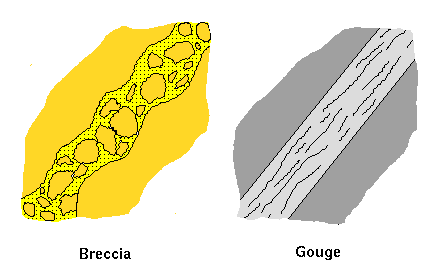Geology in Crossection
Geology in Crossection
Plan (Map) View vs. Crossection View
Some Guidelines to determine relative ages in rock
crossections
Strike Dip and Apparent Dip
Stress in Rocks
Faults
Folds
Joints
Plan (Map) View vs. Crossection View
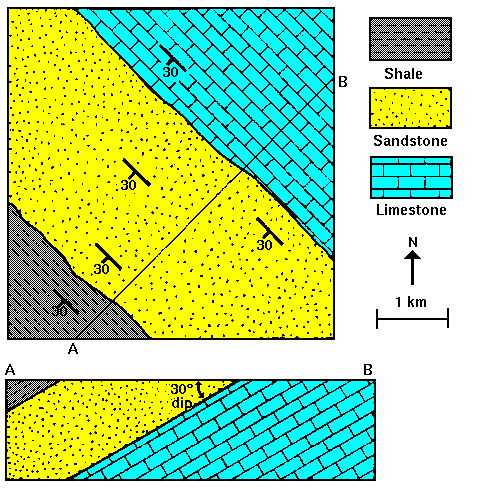
Some Guidelines to determine relative ages in rock crossections..
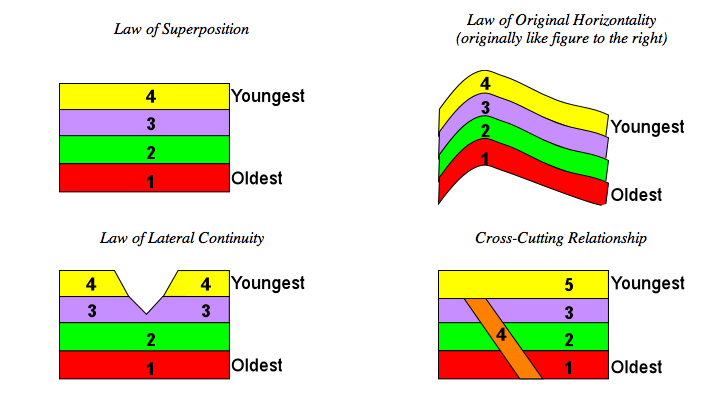
1. Law of Superposition:
in any undisturbed sequence of rocks deposited in layers, the youngest layer is on top and the oldest on bottom, each layer being younger than the one beneath it and older than the one above it.
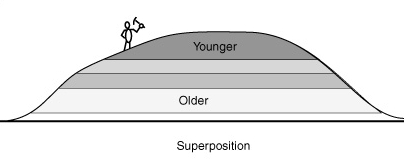
2.Law of Original Horizontality
layers of sediment were originally deposited horizontally under the action of gravity.
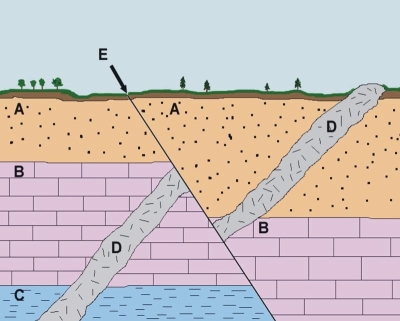
3.Law of Lateral Continuity
originally extended in all directions until they thinned to zero or terminated against the edges of their original of deposition basin
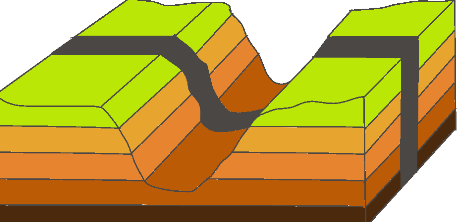
4.Law of Cross-cutting Relationships
the geologic feature which cuts another is the younger of the two features

5. Baked Zone
An intrusive rock with a baked zone is younger than the rock it intrudes
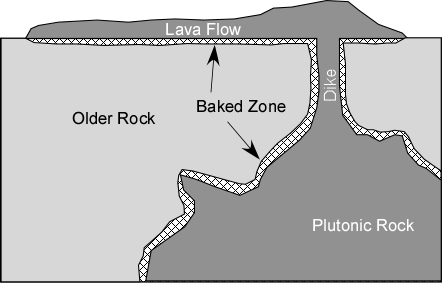
6. Principle of Inclusions
fragments of rock in another rock are older than the rock they are embedded in
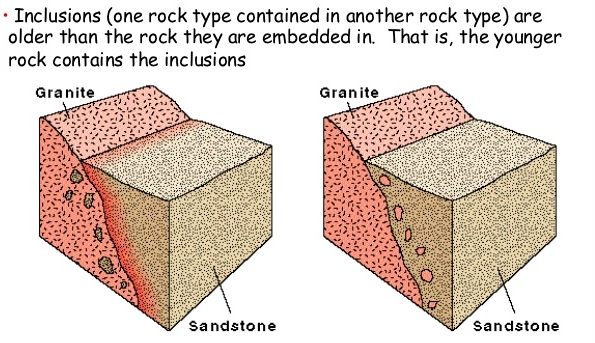
7. Key Bed
for example below: the global Cretaceous-Paleogene boundary - raised iridium levels suggest and asteroid impact 66.043 million years ago
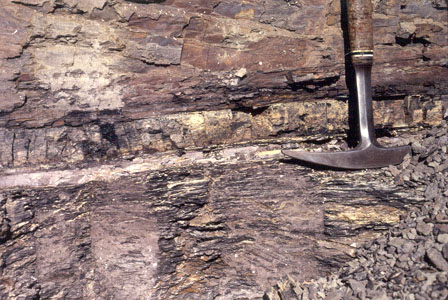
8 Faunal Succession
index fossils and fossil successions can be attributed to particular ages of the rocks
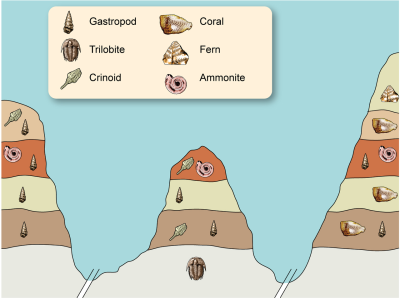
Illustration of rules
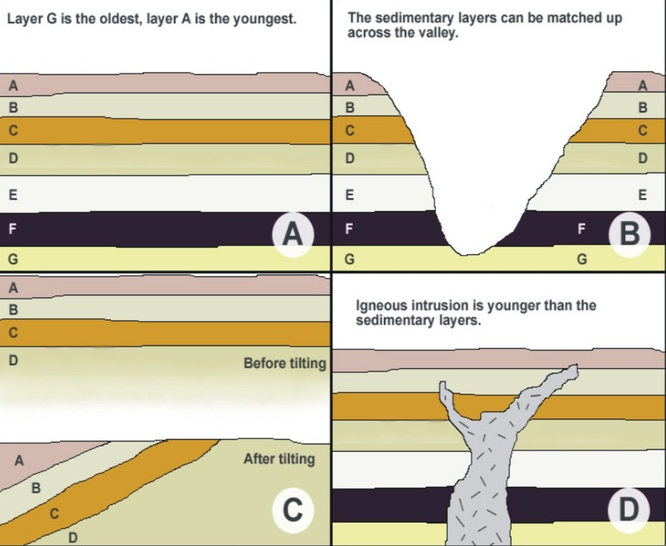
Strike, Dip and Apparent Dip
Dip is the acute angle the rock surface makes with a horizontal planeStrike is the compass direction of the line formed by the intersection of the rock surface with a horizontal plane
Strike and Dip are always perpendicular to each other on a map
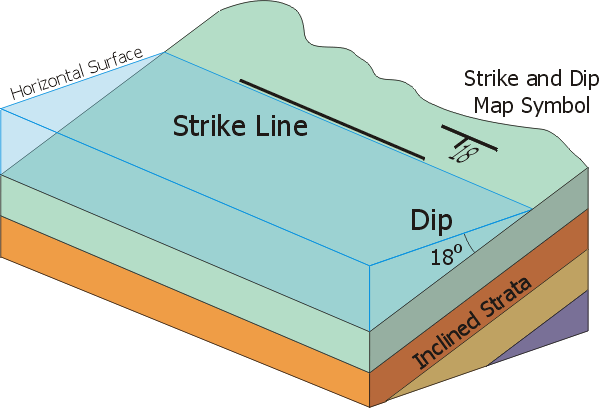
How the rocks appear inclined depends depends on where you take your crossection

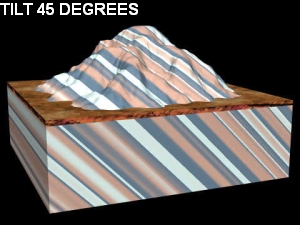
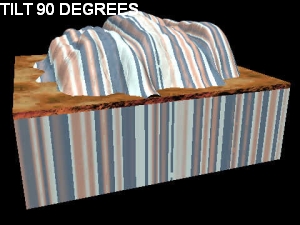
Apparent Dip - is the inclination of the geologic beds as seen from any vertical crossection not perpendicular to the strike.
Apparent gives a false impression of the true thickness and extent of rock units and so must be converted to true dip



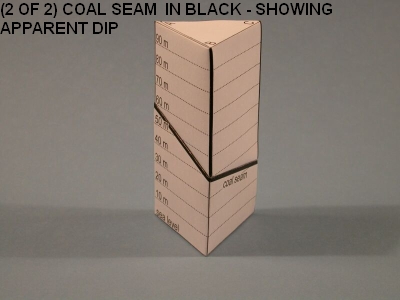

Three Kinds of Stress in Rock

Faults
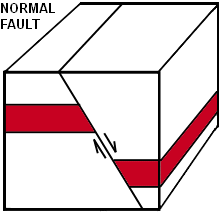
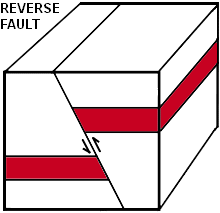
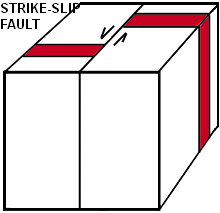

Folds
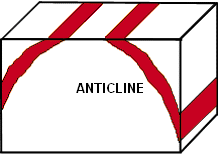
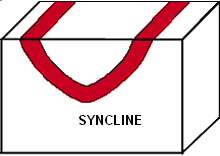
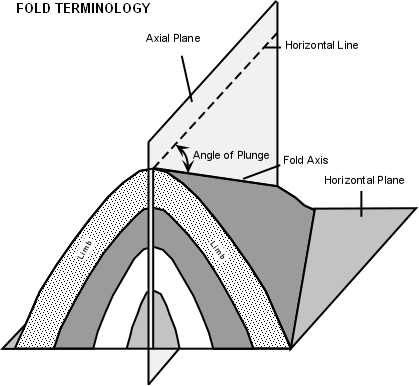
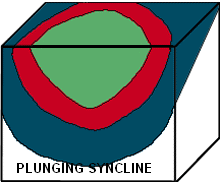
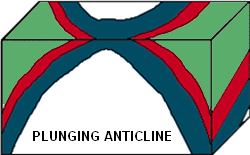

Joints
Joint Pattern form Compresional Forces

Joint Pattern form Tension Forces
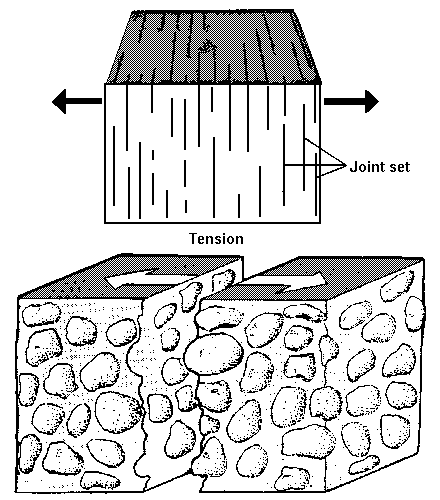
Joint Pattern Around an Intrusion
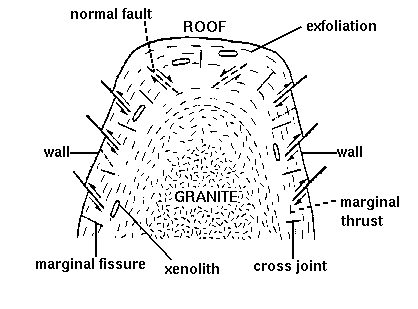
Joints around a Fold
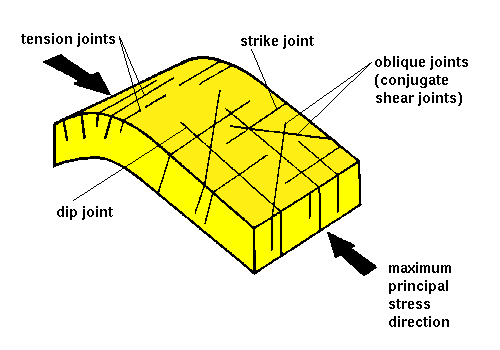
Joints from Cooling Contraction

Indicators of movement along joints
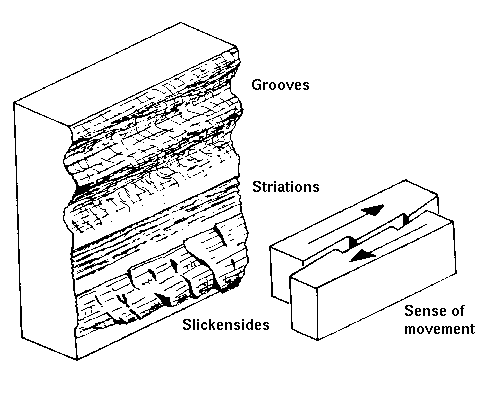
Joint infilling
